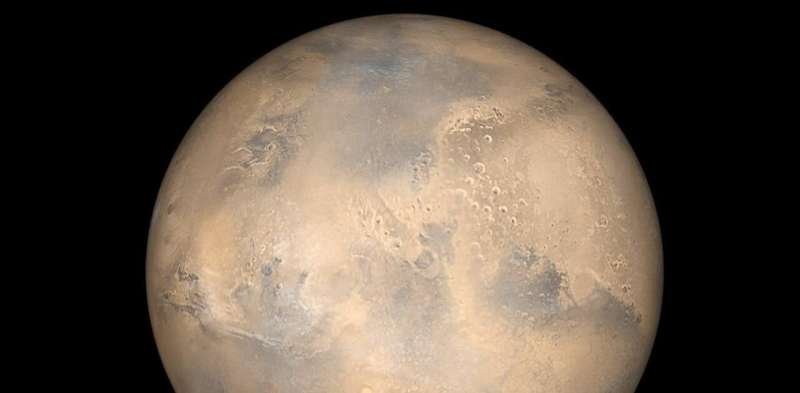Wrap up warm and look for the Moon and Mars together as, 200 million km (124 million miles) away, Perseverance lands.
Close approach
Here on Earth, we see close approaches because of what astronomers call the apparent motion of our Moon and the planets in the sky. Because the Earth and the other planets take different times to go around our Sun, and because the moon takes time to go around Earth, sometimes planets and our Moon look close to each other in the sky.
An "appulse" or "close approach" is when two objects look closest to each other, even if they're not physically close. It doesn't have physical consequences, but it does look impressive, and it's a great chance to take some space and do some planet watching.
On February 18, Mars rises just after sunset, at 17:40 (GMT), and joins a waxing crescent moon. Wherever you are in the world, look south for the Moon, and the little orange-red dot you see near it will be Mars.
Read more: Mars: how scientists prevent Earth's microbes from contaminating other planets

It'll be a treat just getting out and seeing the close approach with the naked eye, but if you have binoculars you'll also be able to get up closer and more personal with the red planet, and especially with the moon.
Although Mars is too small and far away for binoculars to do much more than make the planet look like a slightly bigger orange red dot, even a small pair of binoculars can pick out the Moon's craters in sharp, striking detail. Unfortunately, you won't be able to catch Mars and the Moon together through a telescope—they're still a bit too far away from each other for that.
It's worth wrapping up warm against the cold February air while Mars and the Moon move further south and west over the course of the night. Around 18:40 you'll be able to look up and to the left of Mars to see a set of fuzzy, twinkling pinpricks. These twinkly pinpricks are the Pleiades or the Seven Sisters, a group of hot blue stars more than 400 light years away.
There are far more than seven of them—you'll be able to see anywhere between six and nine with the naked eye, or through binoculars or a telescope, and today we know there are over 1,000. You can track the Moon, Mars and the Pleiades across the sky until they set in the west just after 13:00.
Planets move across the sky. This is how they got to be called planets because the ancient Greeks called them planetai or "wanderers". Right now, Mars is moving steadily to the west and you can usually recognise it by its distinctive colour, as well as its distinct lack of twinkling—stars twinkle, while planets don't. As long as it's a clear night, you can generally spot it.
Mars had its closest approach to Earth back in October last year, which means right now it's getting further away from us. As it moves west, it'll also be moving past the Pleiades into the constellation of Taurus, the bull. By April Mars will be visible straight above Aldebaran—the brightest star in the constellation Taurus. By May, Mars moves into the constellation of Gemini but is unfortunately low in the sky.
You can see Mars and Venus together in early July, low on the western horizon. But by August, Mars will be difficult—if not impossible—to spot. From there it sets too early for us to see in our skies—but don't worry, it'll be back and at a close approach to Earth by 2022.
Explore further
This article is republished from The Conversation under a Creative Commons license. Read the original article.![]()



